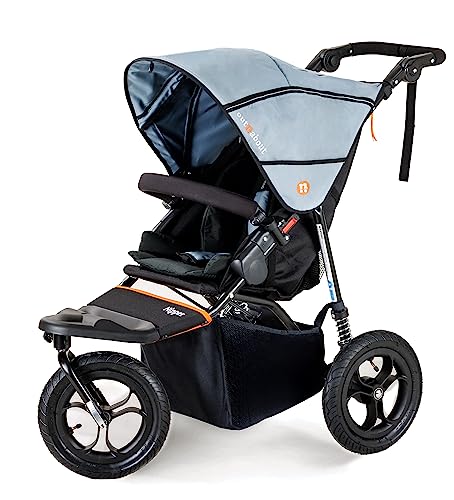Pram Vs Pushchair Tools To Help You Manage Your Daily Life Pram Vs Pus…
페이지 정보

본문

Pram vs. Pushchair: Understanding the Key Differences
When it concerns transferring infants and kids, parents typically discover themselves overwhelmed by the different options available. Amongst these options, prams and pushchairs are 2 of the most typical kinds of baby transportation. While the terms are frequently used interchangeably, each has distinct features and benefits that accommodate diverse parenting needs. In this short article, we will check out the basic distinctions between prams and pushchairs, assisting moms and dads make notified decisions about which is best matched for their household.
What is a Pram?
A pram, or perambulator, is a kind of baby carriage designed primarily for newborns and babies. Prams usually include a totally flat lying position, which is vital for newborns who need to lie flat for back advancement. A lot of prams come equipped with a deep, enclosed body that supplies a comfortable and protected environment for the baby, frequently with extra functions such as hoods or covers to protect them from the components.
Secret Characteristics of Prams:
- Flat Lying Position: Supports healthy spinal advancement in newborns.
- Confined Design: Protects the baby from wind and sunshine.
- Conventional Aesthetic: Often made from products like wicker or fabric, providing a traditional look.
- Weight and Bulkiness: Generally heavier and bulkier than pushchairs.
What is a Pushchair?
A pushchair, also known as a stroller or buggy, is designed for older infants and toddlers who can sit up unassisted. Pushchairs enable numerous seating positions, consisting of reclining alternatives for naptime. They are usually lighter and more nimble than prams double, allowing moms and dads to navigate busy locations with ease. Lots of pushchairs include adjustable handles, storage compartments, and can frequently be folded for convenient transport.
Key Characteristics of Pushchairs:
- Seating Position: Designed for kids who can stay up, with different reclining positions.
- Light-weight and Compact: Easier to maneuver and transport.
- Flexibility: Many designs are convertibles or can accommodate automobile seats.
- Storage Features: Often consist of baskets for carrying diaper bags, toys, etc.
Key Differences Between Prams and Pushchairs
Below is a comparative table highlighting the crucial distinctions between prams and pushchairs.
| Feature | Pram | Pushchair |
|---|---|---|
| Target Age | Newborns to 6 months (flat position required) | 6 months to toddler age (sitting unassisted) |
| Design | Enclosed, standard style | Open, modern-day style |
| Weight | Much heavier, bulkier | Lighter, more compact |
| Seating Options | Flat just | Several positions including reclining |
| Manoeuvrability | Less maneuverable due to weight | Highly maneuverable |
| Storage Space | Limited | Generous below baskets |
Picking Between a Pram and a Pushchair
Factor to consider Factors:
- Age of the Child: Choose a pram for newborns and a pushchair for older babies and toddlers.
- Meant Use: If you prepare to do a great deal of strolling or navigating city streets, think about a model that suits your lifestyle.
- Space: Assess the available storage in your home or car and how compactly a model can fold.
- Budget plan: Consider the cost variety, as prams and pushchairs shop can differ commonly in cost.
- Features: Look for additional features that may be useful for your daily life, such as cup holders, canopies, or easy folding systems.
Benefits and Disadvantages
Benefits of Prams
- Perfect for Newborns: Encourages healthy spine development.
- Comfortable Space: Provides a cozy environment for infants.
Downsides of Prams
- Weight: Heavier and bulkier, making them less practical for everyday usage.
- Restricted Use Time: Generally helpful just for the very first 6 months.
Benefits of Pushchairs
- Versatility: Suitable for longer durations as the kid grows.
- Lightweight Design: Easier to carry and steer.
Drawbacks of Pushchairs
- Not Suitable for Newborns: Requires the kid to be able to stay up unassisted.
- Less Protective: Generally more exposed than a pram.
Often Asked Questions (FAQs)
1. Can I use a pushchair for a newborn?
A lot of pushchairs are not designed for newborns; nevertheless, numerous designs come with infant safety seat adapters. Some pushchairs offer a fully reclining seat choice that might appropriate for babies, however make sure the manufacturer confirms it's safe.
2. Which is better for travel?
Pushchairs are normally preferred for travel due to their light-weight and compact nature. They can frequently be folded quickly for transportation on public transport and fit more easily in automobile trunks.
3. For how long can I utilize a pram?
Prams are generally suitable for babies until they reach around 6 months of age or when they can support themselves in a seated position.
4. Exist hybrid models offered?
Yes, numerous manufacturers produce hybrid models that can be converted from a pram stores near me to a pushchair depending upon the child's advancement phase.
5. What should I search for when buying a pram or pushchair?
When acquiring, consider safety functions, ease of usage, sturdiness, weight, and storage. It's also a good idea to check various models for convenience before deciding.
Picking between a double pram and pushchair and a pushchair eventually depends on the age of your kid and your lifestyle preferences. Comprehending their distinctions assists moms and dads make notified choices that cater to their household's needs. Moms and dads can enjoy the journey of parenthood by ensuring that their child's comfort and security are always focused on, while also considering their own convenience and style.
- 이전글One Word: Highstakesweeps 25.10.27
- 다음글Http //dl.highstakesweeps.com Login Strategies Revealed 25.10.27
댓글목록
등록된 댓글이 없습니다.
